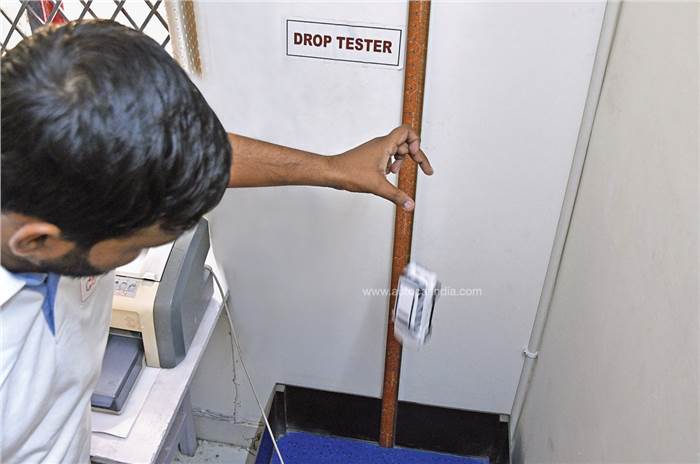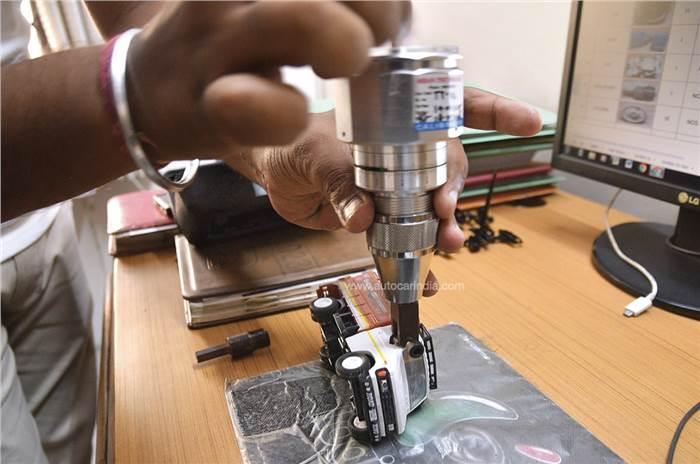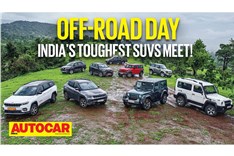Feature: Behind the scenes at Centy Toys
What draws serious die-cast model collectors to toy cars from Centy? we head over to the factory to find out.
Published On Mar 29, 2024 07:30:00 AM
21,910 Views
Follow us onScale model collectors are a finicky bunch. Call their cars toys and they get all worked up, but show them an actual plastic Centy toy and they all want one in their collection. I know this because every single collector at the Autocar India office who swear by their die-cast metal collection made a beeline for the ‘Queen 70’s’, a scale replica of the Padmini from Centy. It’s not hard to understand why – it’s built of plastic, but the detailing on the car is fantastic, right down to the chrome bumper and printed number plates. There’s even tiny wipers on the windscreen and an instrument binnacle on the dash.

Besides the Padmini, other Centy models have also found shelf space with collectors. Of course, part of this is down to the fact that there’s plenty to choose from when it comes to international scale models, but if you are looking for Indian-centric miniature vehicles, homegrown brand Centy Toys is really the only option. The Delhi-based company has sold over 43 million units since it began in 1990. So we really had to go and see for ourselves how and where these little beauties are made.
Centy Toys manufacuring process
The factory is situated at Bawana near New Delhi and at first glance, comes off as a cottage-scale industry setup. Now, the Indian government has laid out stringent testing procedures and quality standards for toys under the Bureau of Indian Standards and is very firm on their implementation, especially to keep out a flood of poorly built Chinese toys. As such, look closer and you’ll see that the brand’s assembly is controlled very carefully with a lot of testing involved. (More details in the box.)

The tests are essential to not only meet local norms but the certification obtained also helps the company sell its products in international markets without facing safety-related legal hurdles. It’s quite an eye-opener to see the amount of tests these toys go through. “These toys have been through more safety tests than their real-life counterparts,” quips Sarabjeet Singh, CEO of Centy Toys.
And while that may not be the gospel truth, there’s a lot going on. The company has around 150 employees, which includes 70 women, and the workmanship is fantastic; each worker dotes over his or her job and you can see they aren’t simply slapping things together but building with care and joy. There’s a lot of smiles all around – I guess being around toys all day will do wonders for your disposition.

Interestingly, much like a real-life automotive manufacturer, Centy Toys has set up its own supplier park around the Bawana facility. Companies that supply raw material granules and other products are located close to the main facility, and that helps in quicker procurement and faster production. While most of the design parts are unique to each model, the wheels and the pull-back mechanisms are the same, which is similar to the platform and component sharing in a real automobile.
Singh says Centy Toys is slowly increasing its footprint in markets like Australia and Canada, and the brand is cleverly targeting sales in overseas Indian stores, cashing in on the sentiment the diaspora has for seeing vehicles from back home. Additionally, the company is in the process of setting up a second, much bigger unit in Khushkhera in Rajasthan that will be operational by June this year.

During the time of our visit, the team was busy putting together unit after unit of the popular ‘Queen 70’s’. Given their finish and level of detail, these have been quite the rage online with collectors and enthusiasts, and yes, I gladly took back a few for my colleagues too.
Scale model crash tests
Before handing over samples to the official government testing agency, Centy Toys gets its products tested in-house and at individual testing agencies too. The testing is to authenticate the compatibility of the toys not only with Indian safety standards (IS 9873 – Part 1, 3, 6 and 9) but also with international benchmarks such as EN71 (European Standard), ASTM-F963 (American Standard), and AUS/NZ (Australian and New Zealand Standard).
Drop Test

Sharp edge test
No, an operator does not lend his or her hand as the implement but a device called Sharp Edge Tester is used to check for sharp edges. The edges of the toy are pushed against a rotating rod with tape wrapped over it. If the tape gets torn, then the edge is identified as a cutting surface.
Sharp point test
An impressionable tool is used and pressed against potential sharp points with a specified amount of force. If it creates an indent, the point is determined to be a sharp point and thus unsafe.
Compression test
This evaluates a toy’s structural integrity by applying a set force to assess its resistance to deformation and breakage. After all, children will be children.
Tension test

The tension test evaluates whether small parts snap off the main body of the toy when tension is applied, as these small parts could be a potential choking hazard.
Torque test
A torque-measuring device is used in conjunction with a torque clamp to record the applied force. Any projection, part or assembly of a toy that a child can grasp with at least the thumb and forefinger or the teeth – yes kids love to put things in their mouth – will be subject to the torque test.
High voltage test

This test is for battery-operated toys only and involves subjecting the toy to a higher-than-normal voltage to assess its resistance to electrical stress. It also verifies if it can withstand abnormal conditions without posing a risk of electric shock or other hazards.
Also see:
How to build your scale model car collection
Father's Day gift ideas for auto enthusiasts
Copyright (c) Autocar India. All rights reserved.








Comments
Member Login
Personal Details
Austrin Alick - 282 days ago
Have a fond memory of being gifted a beige Maruti Omni by my maternal uncle back in '91 when he visited us from the Gulf. I left it in the plastic box for atleast a couple of days before finally opening it. While I was thrilled, I was also left wondering, how could Centy Toys manufacture a real life Omni with striking similarity with that scale model. Had it for years before being gifted another baby blue Maruti 800. Played, competed(with neighboring kids cars), opened them up and literally had the body frame with me for quite a while, till I eventually inclined towards Hot Wheels. Now at 41, I keep staring at the two-tone blue and white Padmini hanging in the shelves of a local stationary. Who knows, I'll buy it eventually. No matter what, Centy Toys have upped their game over the years and their staying-true-to-roots indigenous products are truly a commendable work of art.